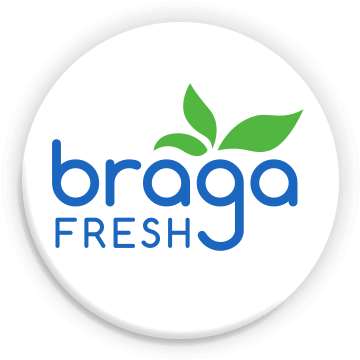Josie’s Organics Encourages Using All Parts of Vegetables–from Root to Stalk–Every Day
It has become fairly common to purchase fresh broccoli at the grocery store, cut off the florets once in the kitchen, and discard the stalks before cooking. Throwing out radish greens, beet leaves and chard stalks is pretty typical, too. These vegetable parts actually can be eaten and are quite delicious. It just takes a little knowledge and practice to use them. Josie’s Organics is setting out to help home cooks see vegetables in a whole new way–literally–and turn them on to whole vegetable cooking.
Whole vegetable cooking encourages home cooks to use the leaves, bulbs, stalks or skins they may normally discard. It’s a more holistic approach to using fresh vegetables–from root to stalk–in making lunch, dinner or snacks. This expanded view of produce allows families to further enjoy the wide variety of organic vegetables now available in grocery stores across the country. “Showing home cooks the value and methods of whole vegetable cooking through our recipes and tips honors and extends the extra care we put into growing our organic vegetables all the way to the family table,” explains Rodney Braga, CEO and farmer of Josie’s Organics. “Organic and sustainable farming requires our dedicated time and attention to continually deliver the highest-quality vegetables to people at home.”
Josie’s Organics’ food and lifestyle expert Chadwick Boyd encourages creativity in the kitchen when it comes to using all parts of vegetables. “Knowing how to shave stalks or chop stems to fix a salad or use as an herb suddenly makes broccoli, beets and other vegetables become something new and fun to cook with in the kitchen,” says Boyd.
Here are some easy ways to go “whole veg” at home:
- Use the leaves. Vegetables like radishes, celery and broccoli, have leaves that are tender and delicious. They add flavor, interest and texture when folded into traditional recipes, and can be used creatively to make entirely new dishes. Radish leaves are spicy like arugula and serve as a nice alternative to lettuce. Beet greens can also be used for a fresh salad or sautéed like spinach. Broccoli has beautiful, deep green leaves that can be cooked along with florets or quickly tossed to make a Skillet Broccoli Stalk side dish.
- Apply new cooking methods. Most people tend to roast beets, but they can be chopped or sliced raw and turned into a fresh salad or slaw, like a Shredded Beet Salad. Instead of steaming or roasting cauliflower, it can be cut into thick “steaks” and grilled for an entrée. Celery ribs can be braised or baked on their own to become a delicious stand-alone side dish.
- Cook traditionally fresh salad veggies. Some vegetables are believed to be only eaten raw, but are surprisingly delicious when cooked. Romaine, for example, is mostly thought of as afresh salad lettuce. However, when placed in a hot skillet or on the grill, it transforms into a warm, smoky side dish, such as Caramelized Romaine Hearts. Radishes are more than fresh accoutrements or garnish. When roasted, they turn into a soft and nutty-tasting warm vegetable that pairs well with any meat.
- Save the stems and stalks. Most chard recipes call for stalks to be removed, but they add a lot of texture and substance to any dish. A quick simmer in liquid, like vegetable broth, will soften them right up, and they tend to retain their beautiful color, especially red and rainbow chard like in this Chard Parmesan Tart. Lacinato kale can be prepared in the same way, adding beneficial fiber and a little crunch to a meal.
- Purchase a new peeler. Many home kitchens have vegetable peelers that are old and frustratingly dull. Pitch the vintage piece and purchase a scalpel-quality new one for $10 or less. A quick, sharp blade glides smoothly and quickly, transforming fresh vegetable stalks, bulbs and skins into meals moms, dads and kids will love.
